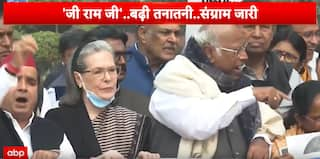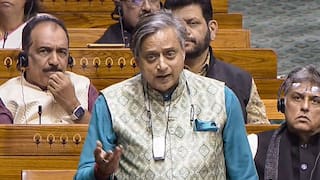Rahul Gandhi Is Not VP Singh. Doing A 1989 In 2024 Will Need Much More Than What Oppn Is Offering

With the resounding victory of the Congress in Karnataka, the political focus has shifted to the Lok Sabha election due next year. The Centre for the Study of Developing Societies (CSDS)-Lokniti tracker poll, held in the aftermath of the Karnataka results, indicates that the popularity of Modi remains intact (43 percent, against 44 in 2019), with a slight uptick in the ratings of Rahul Gandhi (27 percent, against 24 in 2019). Significantly, a large number of the participants responded favourably to the Bharat Jodo Yatra, the 3,500-kilometre foot march spanning 150 days, undertaken by the Congress leader.
Meanwhile, there are attempts to unite the parties opposed to the Bharatiya Janata Party (BJP) at the national level, with Bihar Chief Minister Nitish Kumar taking the initiative on it. As elections become increasingly presidential or personality-driven, the million-dollar question once again is — Modi, versus who? Going by the CSDS-Lokniti poll, Rahul Gandhi does have the edge among the contenders, being the face of the largest opposition party, even if it is not acceptable to the likes of Mamata Banerjee.
Evasive Rahul Gandhi
The problem, however, is that Gandhi continues to be evasive about his candidature. This is not a deliberate ploy to avoid clashes with prime ministerial hopefuls from other parties by any means. In fact, it is very much a continuation of his not-hankering-after-power attitude, an image he wishes to cultivate of himself ever since his foray into politics. The paradox here is that such a strategy might have worked in the case of any other politician, but in Gandhi’s case people find it an extension of his erratic and inconsistent trysts with politics till date.
There is a larger problem with Gandhi’s shirking, though. And that has to do with the political campaigns undertaken by the Congress mascot in the past. If one were to take note of Gandhi’s politics, it is dominated by anti-Modi vitriol, often forgetting that a candidate needs to put his own agendas across before taking the attack to the opposition. Why does a young voter, who may not remember the Congress-led United Progressive Alliance (UPA) days, vote for the Congress or for Gandhi? The voters of today are certainly not influenced by the Gandhi surname.
So, the Congress will have to immediately draw up the agendas on which it plans to contest the 2024 election. If Gandhi cannot match Modi on Hindi oratory or articulation, other ways need to be conceptualised to counter that. Gandhi’s bus ride in Bengaluru and breaking bread with gig workers were well received, for instance. Just as well, Gandhi needs to make the grand old party an appealing choice to today’s youth.
What the Congress stands for today, and whether it has traversed leftwards or rightwards in the recent past routinely come up for debates these days. Since this is not something that can be resolved in the window leading up to the Lok Sabha polls, Congress can simply use the test of liberalism as a general principle to settle specific issues. Even otherwise, Congress comes closest to being a liberal party in India, which should make it easier for the youth to identify with it — at least in theory.
Corruption As A Plank
Then comes the question of the message. In 2019, the catchy ‘Chowkidar Chor Hai’ did not seem to make any dent to Modi’s aura. Instead, it even seemed to boomerang on the Congress as the election was held in the backdrop of the Pulwama attack and the retaliatory strikes in Balakot, with national security being the prime concern for the voters.
Even in Karnataka, this time around Gandhi was seemingly warned by the state unit against bringing up crony capitalism or invoking charges of corruption against Modi. That doesn’t mean the issue of corruption didn’t resonate with the voters locally. In fact, the Karnataka election is probably the first in a long time where the Congress turned the tables on the BJP on the issue of corruption, although it was directed against the Bommai government.
The potential for corruption to become a national issue need not be discounted altogether. A classic case of this was the 1989 Lok Sabha election when the Rajiv Gandhi-led Congress with a brute majority of 415 seats was unseated on the very issue. There is a major difference between then and now, though. Those days VP Singh had emerged as a popular face to take on the reigning prime minister, especially in the heartland, with the press backing him to the hilt.
As for Rahul Gandhi today, he neither has the political nous nor the credibility that VP Singh possessed, having never held a public office till date. Gandhi might have through the Bharat Jodo Yatra finally shed the ‘Pappu’ image bestowed on him by the BJP, but he has a long way to go before earning the stripes that VP Singh possessed in a previous era by serving as chief minister of Uttar Pradesh and later as a Union minister holding plum portfolios such as defense and finance.
That leaves Gandhi’s charge of crony capitalism, and attempts to bracket Modi with Gautam Adani as ‘Modani’ in the wake of the Hindenburg report, an issue with limited potential. Though he should not sidestep the issue altogether, with the electorate concerned more about bread-and-butter issues, it might make sense for Gandhi to embark on a comprehensive campaign, putting forward his dream and vision for India. After all, there has to be a solid reason for a voter to opt for Rahul Gandhi over Narendra Modi.
ALSO READ | Congress's Karnataka Win Shows Social Engineering Can Work, Could Be Key To 2024
Opposition Unity
Then there is the question of opposition unity. Unlike 1977 or 1989, when practically every party ganged up against the Congress governments led by Indira Gandhi and Rajiv Gandhi, respectively, such an umbrella coalition is unlikely to materialise today.
In the run-up to the 1989 election, for instance, VP Singh ensured the merger of the five Centre-Left parties in the opposition, namely the Janata Party, Lok Dal (A), Lok Dal (B), Congress (S), along with his own Jan Morcha into the Janata Dal, which then formed the National Front with regional parties Telugu Desam Party (TDP), Dravida Munnetra Kazhagam (DMK) and the Asom Gana Parishad (AGP), before finally entering into seat adjustments with the Left parties and the BJP.
In the present situation, that would compare with Congress splinter parties such as the Trinamool Congress, YSR Congress, Nationalist Congress Party and others merging into the parent party, and that entity entering into alliances with regional parties — far-fetched and totally inconceivable, which also reflects the Opposition’s chances of dislodging the BJP as things stand.
The best-case scenario today would be for some of the like-minded parties to announce a pre-poll alliance, which might eventually persuade the fence-sitters to join their ranks, making one-to-one contests against the BJP feasible in as many seats. However, any such alliance can only hope to have a chance if the Congress manages to turn its votes into seats in states such as Madhya Pradesh, Rajasthan, Chhattisgarh and the rest of the seats where it is in direct contest with the BJP.
As it became evident in 2019, winning state elections doesn’t translate into wins in Lok Sabha polls — even if national security doesn’t get the primacy it received in 2024. And the BJP has many aces up its sleeve, including potentially a brand-new Ram Mandir in Ayodhya in the run-up to the polls.
The author is a journalist and columnist based in South India.
[Disclaimer: The opinions, beliefs, and views expressed by the various authors and forum participants on this website are personal and do not reflect the opinions, beliefs, and views of ABP News Network Pvt Ltd.]


























